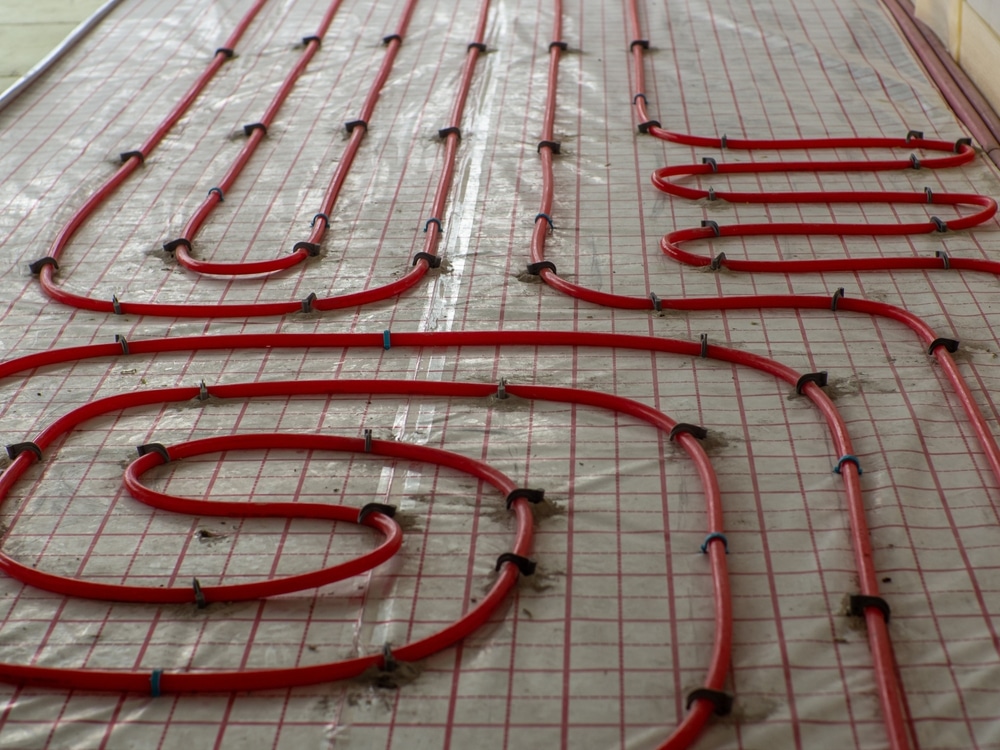
There are numerous applications where frozen ground or similar conditions must be thawed and/or removed for safety or completion of a given project. For these instances, the use of ground thaw heaters, also known as hydronic surface heaters, is highly common. What are these heaters, and what are some of the most common situations in which they're put to use?
At 1 Source Portable Air, ground thaw heaters are just one of many heating equipment rental types we offer, which also include construction heaters, indirect fired heaters and many others. For those unfamiliar with ground thaw heaters, here's a rundown on how they work and some of their most common applications.
As their name indicates, ground thaw heaters are designed to produce enough warmth to thaw frozen ground, ice, and other surfaces. The setup involves laying out the hose of the ground heater in loops directly on the surface to be heated. The hose is connected to the heater, and a Propylene glycol mixture that has been warmed by the boiler is circulated through the looped hose network. A blower fan is then used to blow warm air over the surface, and a vapor barrier is situated on top of the hose for insulation and moisture retention. The hose remains in place until the ground has been thawed and frost has been removed.
A more rudimentary form of ground heaters is the ground thawing blanket. These are electric blankets that are covered with a protective layer on one side, which is then laid out over the frozen area and heated until it thaws. Some people don't consider these blankets to be a "ground thaw heater" in the same way as the hydronic surface heater and hose, but since they perform the same task, they are often categorized as such.
Our next several sections will go over some of the common applications of ground thaw heaters, as well as the benefits they provide.
Concrete is a delicate material that needs to be cured in an environment with a certain temperature and humidity. In some settings, such as winter climates, this can be extremely difficult or even impossible—unless you have access to ground thaw heaters.
By using a ground thaw heater, contractors can quickly create the ideal environment for curing concrete. This not only ensures better results, but also prevents potential problems that may arise when concrete is not cured properly, including longer cure times and potential cracking. The use of a hydronic surface heater also allows for huge swaths of space to be quickly and easily heated for curing instead of having to rely on multiple smaller heat sources.
This is the most common use for ground thaw systems. The use of ground heaters extends the working season, allowing contractors to continue excavation and foundation work through the winter months. Without a ground thaw heater system, it would be nearly impossible to make any headway with the project as the frozen ground would be unworkable and cause undue stress on workers and digging equipment.
Thanks to these heaters, contractors don't have this problem anymore. They can quickly thaw the frozen surface, which not only makes it easier to dig but also prevents potential damage that can occur when foundations are poured over frozen ground.
Underground pipelines, water easements, and other such materials are prone to freezing during the winter months. In order to protect these pipes from damage or blockages due to ice, contractors will often use ground thaw heaters to warm up the soil around them and prevent deep frost and freezing.
This may be done by laying a ground thaw heater blanket over the affected area, or by using a hydronic ground heater system with hoses over the area to be warmed. Either way offers an effective option to protect these essential materials from potential damage caused by freezing temperatures.
While not typically the primary use of these heaters, hydronic surface heaters can also be used to provide comfort heating on a job site. This is particularly useful in winter months when contractors need to be out working in cold weather but don't have access to other sources of heating.
Although this type of application is limited to small spaces or mostly enclosed areas, hoses for ground thaw heaters can be connected to a portable heat exchanger or fan coil instead of being laid on top of the surface to be heated. Air is then blown across the heated coil into the space to be warmed.
As you can see, ground thaw heaters offer a lot of benefits in many different settings. Whether you're a contractor looking to maintain productivity during cold weather or just trying to keep pipes and easements from freezing during the winter months, these heating systems can be a real lifesaver. Their effectiveness and efficiency have made them one of the most popular solutions for these tasks, and it's easy to understand why.
For more here, or to learn about any of our heating rentals or other portable HVAC equipment, speak to our team at 1 Source Portable Air today.